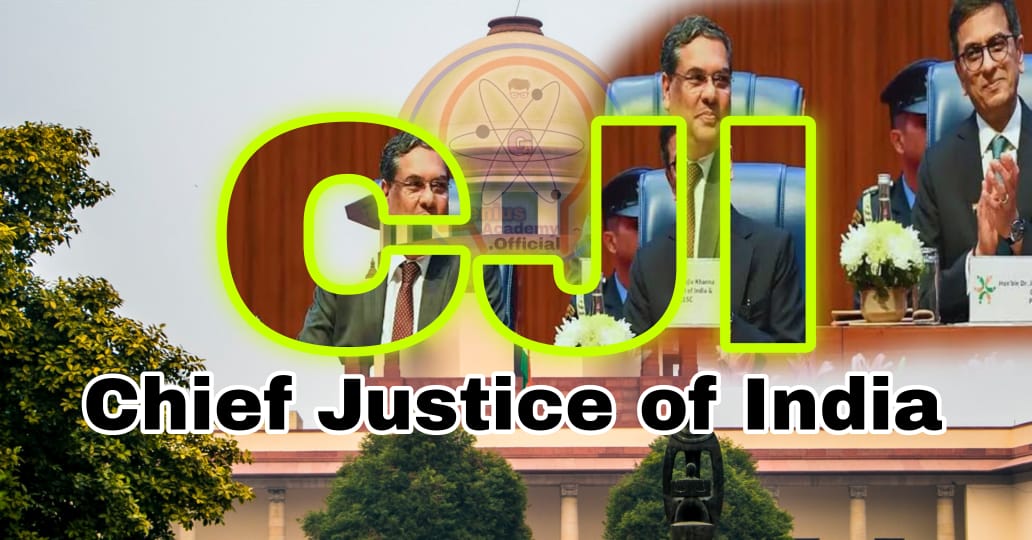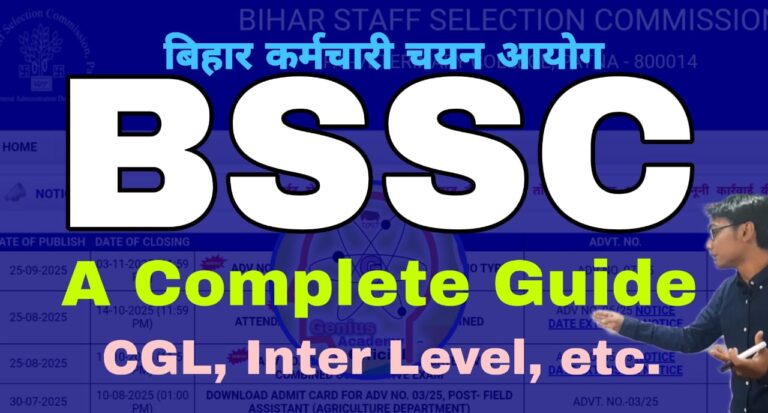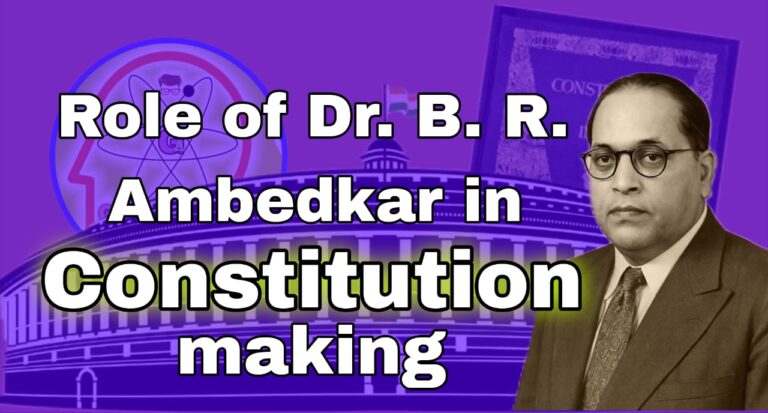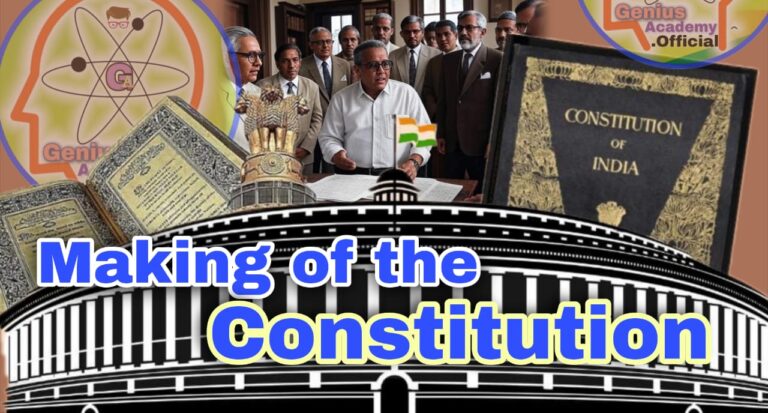Appointment, Tenure, and Removal of the Chief Justice of India (CJI)
Constitutional Mandate
The office of the Chief Justice of India (CJI) is established under Article 124(1) of the Indian Constitution, which provides for the composition of the Supreme Court. However, the Constitution does not prescribe a detailed procedure for appointing the CJI, leaving certain aspects to convention and executive discretion.
Appointment Process
The CJI is appointed by the President of India under Article 124(2). This process involves:
- Recommendation by the Incumbent CJI:— Traditionally, the outgoing CJI recommends their successor based on seniority in the Supreme Court. Seniority is determined not by age but by the length of service in the apex court.
- Consultation under Article 124(2):— If there is any doubt about the senior-most judge’s suitability to serve as CJI, the President may consult other judges of the Supreme Court.
- Role of the Government:—
- The Union Law Minister seeks the recommendation of the incumbent Chief Justice of India (CJI).
- The Law Minister forwards the recommendation to the Prime Minister, who then advises the President for the formal appointment.
Eligibility Criteria
To be eligible for appointment as CJI, the individual must:
- Be an Indian citizen.
- Fulfill one of the following criteria:—
- Have served as a judge in a High Court (HC) or in succession across multiple HCs for at least five years.
- Have practiced as an advocate in an HC (or multiple HCs in succession) for at least ten years.
- Be a distinguished jurist in the opinion of the President.
Tenure
- The Constitution does not fix a specific tenure for Supreme Court judges, including the CJI. Judges, however, serve until the age of 65 years as per Article 124(2).
- Questions regarding a judge’s age are determined by procedures laid down by Parliament.
Removal
The CJI can only be removed through a rigorous process as outlined in Article 124(4):
1. The President can remove the CJI following an address by Parliament supported by:
- A majority of the total membership of each House.
- At least two-thirds of the members present and voting.
2. Grounds for removal include:
- Proven misbehavior.
- Proven incapacity.
This process has been designed to safeguard judicial independence by making removal exceptionally challenging.
Conventions
- The principle of seniority has guided the selection of the CJI since independence. Deviations from this convention are rare and often controversial.
- In practice, the executive’s role is limited to endorsing the recommendation made by the judiciary, preserving the tradition of judicial primacy in appointments.
Judicial Transparency
In 2019, the Supreme Court ruled that the office of the CJI is subject to the Right to Information (RTI) Act, 2005. This landmark judgment emphasized transparency in judicial appointments and administrative decisions, reinforcing accountability while respecting the judiciary’s independence.
Key Challenges and Debates
- Lack of Codified Procedure:— The absence of a detailed constitutional or statutory procedure for appointing the CJI leaves room for executive influence or potential disputes.
- Judicial Primacy vs. Executive Role:— Although judicial recommendations generally prevail, tensions between the judiciary and the executive have occasionally surfaced, particularly regarding the Collegium system and judicial appointments.
- Senior vs. Meritorious Appointments:— The convention of seniority may sometimes conflict with the need to appoint the most competent or reform-minded judge as CJI.
While the framework governing the appointment, tenure, and removal of the CJI reflects the Constitution’s emphasis on judicial independence, its reliance on convention and discretionary processes poses challenges. Codifying these processes and fostering transparency in judicial appointments could strengthen the credibility and autonomy of the judiciary in the long term.
Daily Mains Practice Questions
UPSC (CSE) Mains Questions on Chief Justice of India (CJI)
General Studies Paper II: Polity and Governance
| [Q1.] Analyze the constitutional provisions related to the appointment and removal of the Chief Justice of India (CJI). Suggest reforms to ensure transparency and independence in the process. (250 words) |
| [Q2.] Discuss the significance of the convention of seniority in the appointment of the Chief Justice of India. Should merit and reformist vision play a greater role? Critically evaluate. (250 words) |
| [Q3.] “Judicial transparency is a cornerstone of democracy.” Discuss this statement in light of the Supreme Court’s decision to bring the office of the CJI under the purview of the RTI Act, 2005. (250 words) |
| [Q4.] Examine the role of the executive in the appointment of the Chief Justice of India. How does it align with the principles of separation of powers and judicial independence? (250 words) |
| [Q5.] Discuss the challenges associated with the removal process of the Chief Justice of India under Article 124(4). How does it safeguard judicial independence? (250 words) |
General Studies Paper IV: Ethics, Integrity, and Aptitude
| [Q6.] “Judicial independence is not just a constitutional mandate but also an ethical necessity.” Analyze this statement with reference to the appointment process of the Chief Justice of India. (250 words) |
FAQs on the Appointment, Tenure, and Removal of the CJI
1. How is the Chief Justice of India appointed?
Answer:—
The CJI is appointed by the President of India under Article 124(2) of the Constitution. The appointment traditionally follows the seniority principle, where the outgoing CJI recommends the senior-most Supreme Court judge as the successor.
2. What are the eligibility criteria for becoming the CJI?
Answer:—
To be eligible for the position of the CJI, an individual must:
- Be an Indian citizen.
- Have served as a High Court judge for at least five years, or practiced as an advocate in a High Court for at least ten years, or be a distinguished jurist in the President’s opinion.
3. What is the tenure of the CJI?
Answer:—
The Constitution does not fix a specific tenure for the CJI. However, all Supreme Court judges, including the CJI, serve until the age of 65 years.
4. Can the CJI be removed from office?
Answer:—
Yes, the CJI can be removed under Article 124(4) by the President of India, following an address by Parliament supported by:
- At least two-thirds of the members present and voting.
- The grounds for removal are proven misbehavior or incapacity.
5. What role does the government play in appointing the CJI?
Answer:—
The government plays an indirect role. The Union Law Minister seeks the outgoing CJI’s recommendation, forwards it to the Prime Minister, who then advises the President to make the formal appointment.
6. Does the Right to Information (RTI) Act apply to the office of the CJI?
Answer:—
Yes, in 2019, the Supreme Court ruled that the office of the CJI comes under the purview of the RTI Act, ensuring transparency in judicial appointments and administrative decisions.
7. What are the challenges in the current system of appointing the CJI?
Answer:—
To be eligible for the position of the CJI, an individual must:
- Lack of a codified procedure, leading to reliance on convention.
- Potential conflicts between judicial primacy and executive influence.
- Criticisms of the seniority principle, which may overlook merit or reform-oriented candidates.
Prelims Questions on Chief Justice of India (CJI)
(1.) Which one of the following statements is correct with reference to the appointment of the Chief Justice of India (CJI)?
Correct Answer!
Incorrect Answer!
(2.) Who appoints the Chief Justice of India (CJI)?
Correct Answer!
Incorrect Answer!
(3.) What is the maximum age until which a Supreme Court Judge, including the CJI, can serve?
Correct Answer!
Incorrect Answer!
(4.) What are the eligibility criteria for appointment as a Supreme Court Judge or CJI?
Correct Answer!
Incorrect Answer!
(5.) What role does the Central Government play in the appointment of the CJI?
Correct Answer!
Incorrect Answer!
(6.) What significant ruling regarding the office of the CJI was made by the Supreme Court in 2019
Correct Answer!
Incorrect Answer!
(7.) What is the removal process for the Chief Justice of India?
Correct Answer!
Incorrect Answer!
Correct Answer!
Incorrect Answer!
(9.) Which Article governs the consultation process for the appointment of Supreme Court Judges, including the Chief Justice of India (CJI)?
Correct Answer!
Incorrect Answer!
(10.) What is the basis of the traditional recommendation for the appointment of the Chief Justice of India?
Correct Answer!
Incorrect Answer!
(11.) Which constitutional article provides grounds for the removal of the Chief Justice of India (CJI)
Correct Answer!
Incorrect Answer!
(12.) Who determines disputes regarding the age of a Supreme Court judge, as per the Constitution?
Correct Answer!
Incorrect Answer!
(13.) What is the constitutional provision for appointing a judge as a distinguished jurist to the Supreme Court?
Correct Answer!
Incorrect Answer!
(14.) How is the recommendation for the appointment of the Chief Justice of India initiated?
Correct Answer!
Incorrect Answer!
(15.) Which of the following is not an eligibility criterion for appointment as a Supreme Court judge or CJI?
Correct Answer!
Incorrect Answer!
(16.) What is the mechanism for the removal of the Chief Justice of India (CJI)?
Correct Answer!
Incorrect Answer!
(17.) Under which Article of the Constitution is the office of the Chief Justice of India (CJI) constitutionally mandated?
Correct Answer!
Incorrect Answer!





